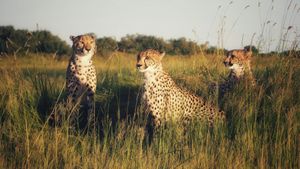An extraordinary archaeological discovery has emerged from the jungles of Mexico, highlighting the serendipitous power of modern technology and online research. A PhD student, Luke Auld-Thomas, inadvertently unearthed the remnants of what has been dubbed the "lost Mayan city" named "Valeriana" using publicly available LiDAR data, which stands for Light Detection and Ranging. This vast city, hidden beneath dense vegetation and previously overlooked, promises to change our comprehension of ancient Mayan civilization significantly.
Located in the southeastern state of Campeche, the site is believed to encompass over 6,600 structures, including impressive elements like pyramids, plazas, and amphitheaters. It is estimated to have been home to between 30,000 and 50,000 inhabitants during its peak, around 750 to 850 CE, marking it as one of the largest and densest Mayan settlements ever discovered. This lavish metropolis existed just 15 minutes from a major highway, previously considered uninhabited by the Maya.
The data Auld-Thomas stumbled upon was initially collected not for archaeological purposes but for monitoring carbon levels within the forest. He recounts this thrilling moment of discovery: "I was on something like page 16 of Google search and found a laser survey done by a Mexican organization for environmental monitoring.” The LiDAR survey was conducted back in 2013 and mapped over 122 square kilometers of terrain—an area larger than the state of Connecticut.
Traditionally, locating ancient structures required extensive fieldwork, where archaeologists painstakingly traversed small sections of land with machetes, exposing potential sites for exploration. This conventional method yielded only limited views of the ancient civilization, as Luke noted, “...our sample of the Maya civilization was just a couple of hundred square kilometers.” This new method, which his team adopted, uses LiDAR to detect subtle anomalies—showing not just larger settlements but also networks of smaller villages stretching across the jungle floor.
The significance of this discovery cannot be overstated. It adds layers to the narrative of the Maya, indicating there was likely far more urbanization than previously thought across the Yucatan peninsula. Archaeologists have long theorized the existence of hidden cities; now, through modern technology and some fortunate clicks, evidence supports these claims. Auld-Thomas, along with his collaborators from Tulane University, Mexico's Instituto Nacional de Antropologia e Historia, and the University of Houston’s National Center for Airborne Laser Mapping, published their findings recently.
"This really puts an exclamation point behind the statement: we have not found everything, and yes, there’s much more to be discovered," Auld-Thomas stated, emphasizing the notion of undiscovered sites still prevalent throughout the jungle. By utilizing LiDAR technology effectively, the team demonstrated the ability to reactivate the inner knowledge of Maya urban life—settlements marked by monumental architecture, engaging public spaces, and sophisticated agricultural areas.
Among the pronounced structures within Valeriana are residential buildings, public plazas, sports fields, and, remarkably, temple pyramids. The lost city boasts the characteristics commonly associated with Classic Maya capitals, showcasing the level of governance and societal complexity once present.
Not only does this discovery advance the academic and historical narrative surrounding the Maya civilization, but it also opens avenues for addressing current urban development challenges. Auld-Thomas suggests exploring ancient urban designs could inspire modern city planning to tackle issues related to sustainability and environmental pressures. He remarked, “Given the environmental and social challenges we are facing from rapid population growth, it can only help to study ancient cities and expand our view of what urban living can look like.”
This remarkable intersection of technology, research, and sheer luck not only enriches our historical knowledge but also promises to provide innovative solutions for contemporary issues. Valeriana remains buried under the Mexican jungle, just waiting for more archaeologists to retrace their steps and discover what wonders lie hidden beneath the trees.



